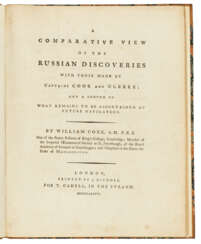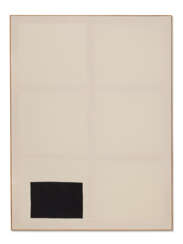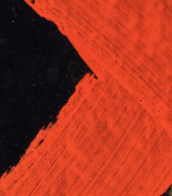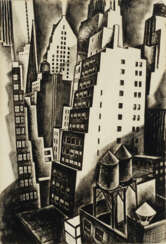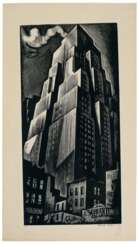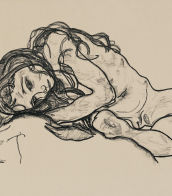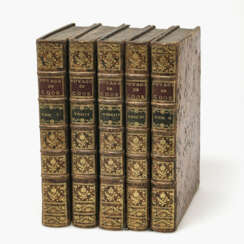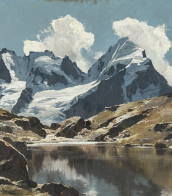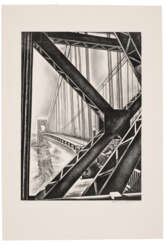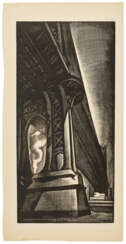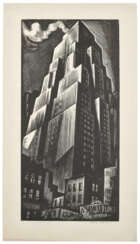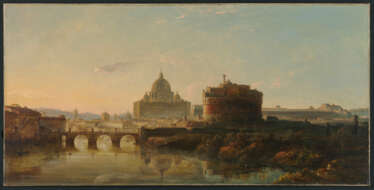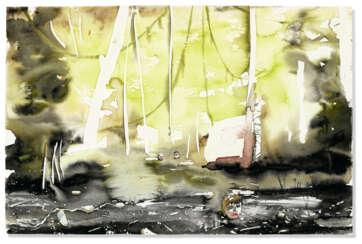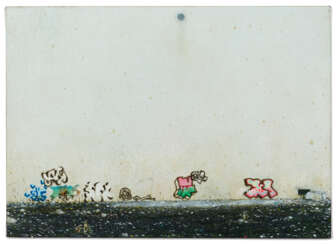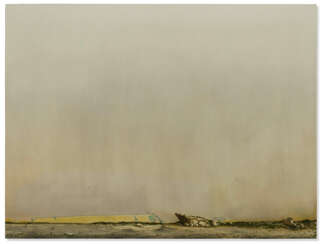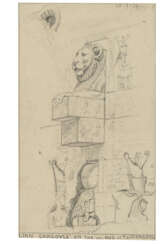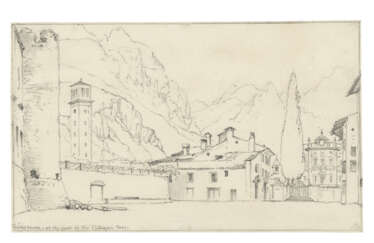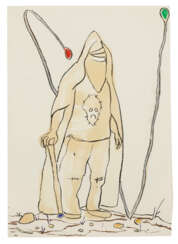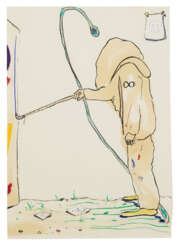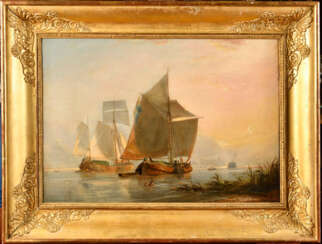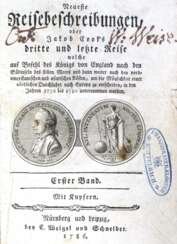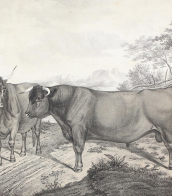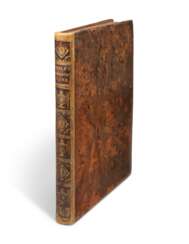cook
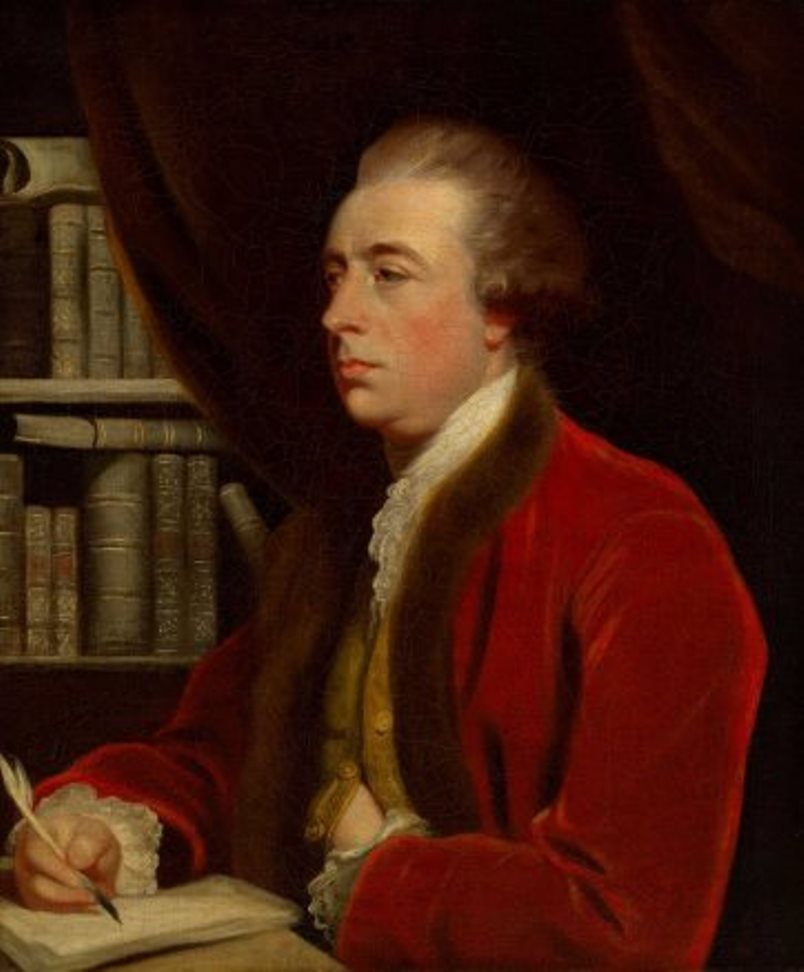
John Hawkesworth was a British writer, playwright and book editor.
In collaboration with Samuel Johnson, Hawkesworth founded the periodical The Adventurer. He wrote poems and articles for this publication and for the Gentleman's Magazine, and edited the works of Swift (1754-1755). Hawksworth adapted several literary works for the theater and also composed various original dramatic works himself.
John Hawksworth was commissioned by the British Admiralty to compile An Account of Voyages made in the Southern Hemisphere (1773), devoted mainly to the exploratory voyages of Captain James Cook.
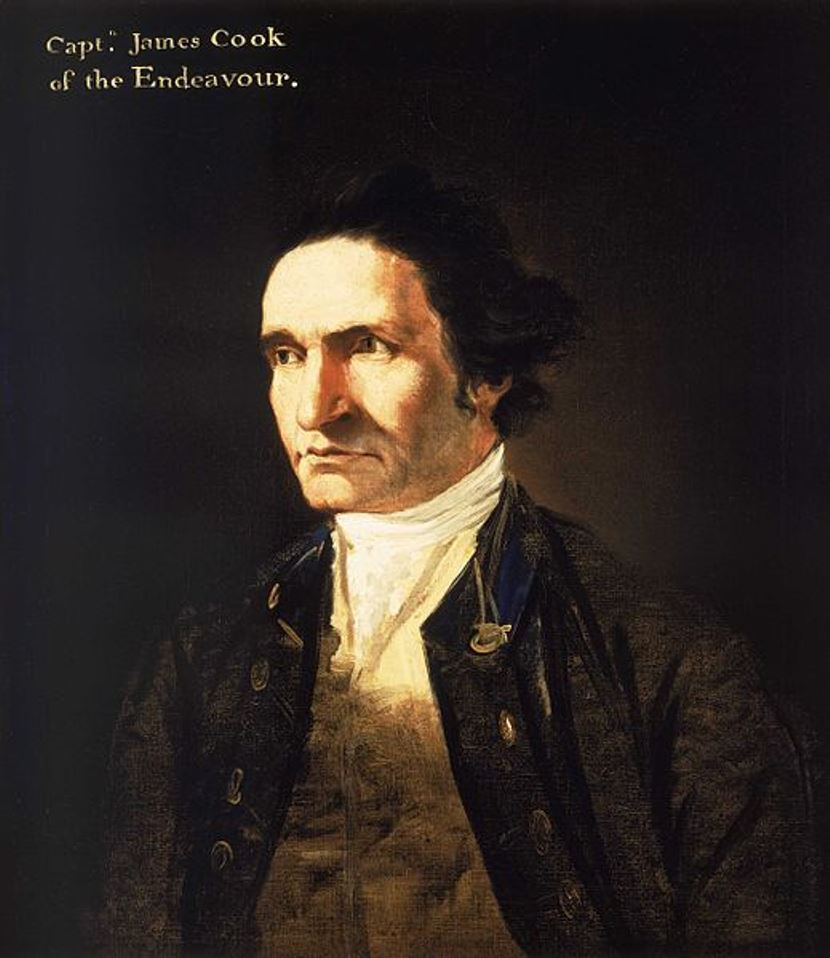



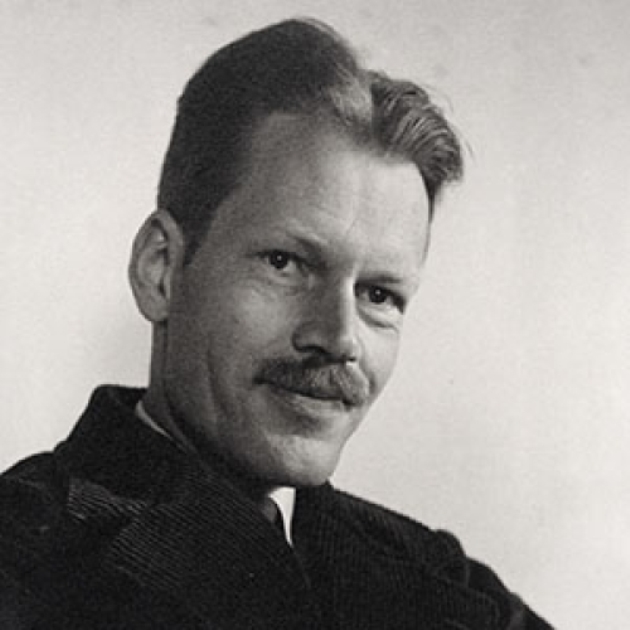
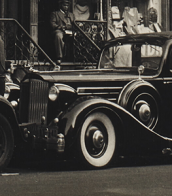




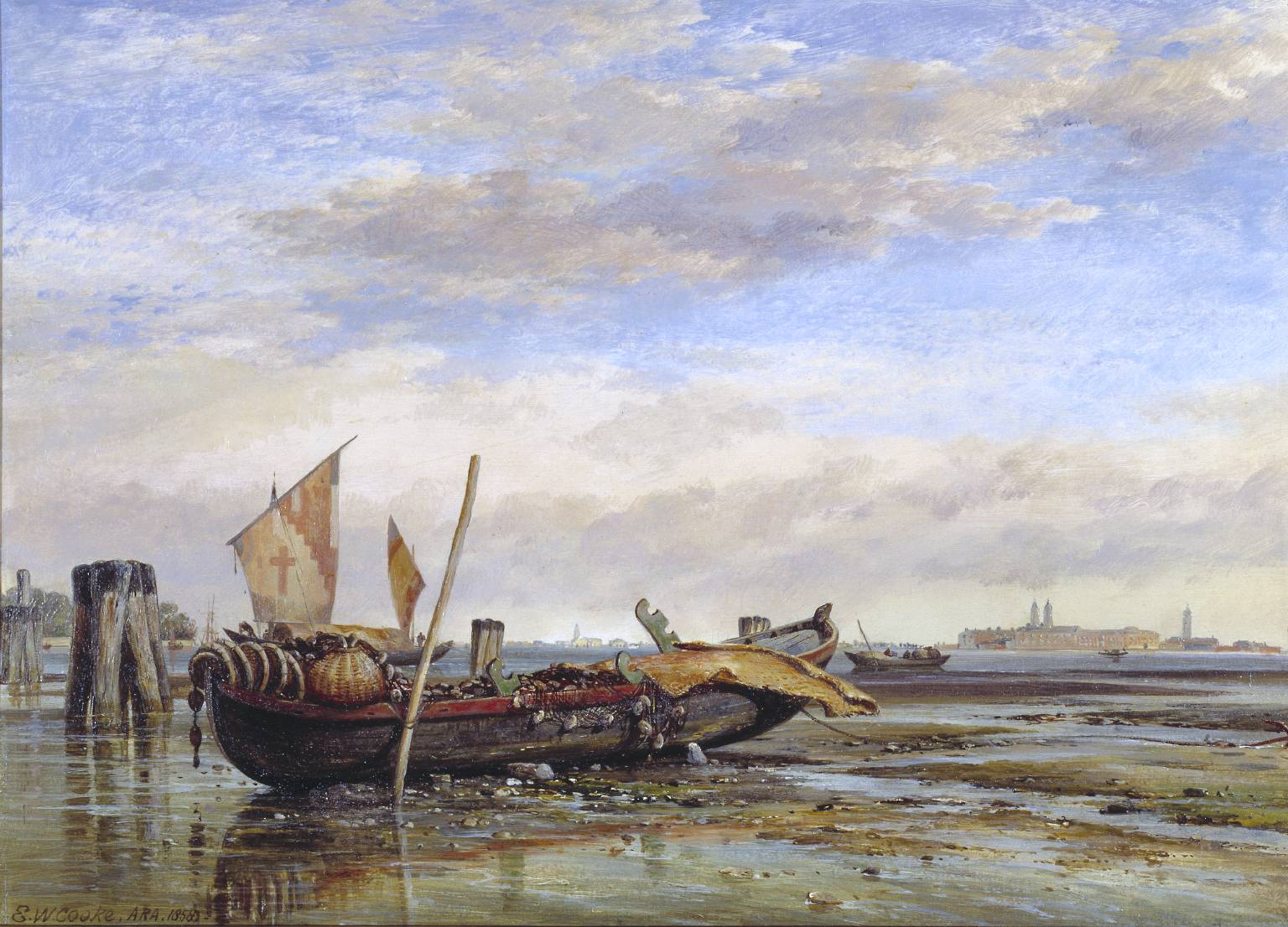
Edward William Cooke, a distinguished English artist, is celebrated for his mastery in maritime painting. His upbringing in an artistic family, with his father and uncle being notable engravers, significantly influenced his early development as an artist. Cooke's talent extended beyond the marine realm, as he was proficient in geological and botanical illustrations as well.
His works, which often depicted detailed ships and coastal scenes, were heavily inspired by 17th-century Dutch marine artists, a style that became synonymous with his name. Edward William Cooke's paintings, such as "Beaching a Pink at Scheveningen," exhibited at the Royal Academy, reflect his meticulous study of natural and light effects, particularly influenced by his travels across Europe, including the Netherlands, Scandinavia, and Venice.
Edward William Cooke's diverse interests led him to become a Fellow of several prestigious societies, including the Linnean Society, the Geological Society, and the Zoological Society. His contributions to the arts and sciences were further acknowledged when he was elected a Fellow of the Royal Society in 1863.
For art and antique enthusiasts, Edward William Cooke's legacy is a testament to his profound impact on maritime art, making his works valuable pieces in collections worldwide. If you're keen on exploring more about Cooke's art and contributions, consider signing up for updates on new product sales and auction events related to his works.
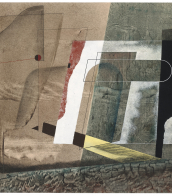

Edward William Cooke, a distinguished English artist, is celebrated for his mastery in maritime painting. His upbringing in an artistic family, with his father and uncle being notable engravers, significantly influenced his early development as an artist. Cooke's talent extended beyond the marine realm, as he was proficient in geological and botanical illustrations as well.
His works, which often depicted detailed ships and coastal scenes, were heavily inspired by 17th-century Dutch marine artists, a style that became synonymous with his name. Edward William Cooke's paintings, such as "Beaching a Pink at Scheveningen," exhibited at the Royal Academy, reflect his meticulous study of natural and light effects, particularly influenced by his travels across Europe, including the Netherlands, Scandinavia, and Venice.
Edward William Cooke's diverse interests led him to become a Fellow of several prestigious societies, including the Linnean Society, the Geological Society, and the Zoological Society. His contributions to the arts and sciences were further acknowledged when he was elected a Fellow of the Royal Society in 1863.
For art and antique enthusiasts, Edward William Cooke's legacy is a testament to his profound impact on maritime art, making his works valuable pieces in collections worldwide. If you're keen on exploring more about Cooke's art and contributions, consider signing up for updates on new product sales and auction events related to his works.


Edward William Cooke, a distinguished English artist, is celebrated for his mastery in maritime painting. His upbringing in an artistic family, with his father and uncle being notable engravers, significantly influenced his early development as an artist. Cooke's talent extended beyond the marine realm, as he was proficient in geological and botanical illustrations as well.
His works, which often depicted detailed ships and coastal scenes, were heavily inspired by 17th-century Dutch marine artists, a style that became synonymous with his name. Edward William Cooke's paintings, such as "Beaching a Pink at Scheveningen," exhibited at the Royal Academy, reflect his meticulous study of natural and light effects, particularly influenced by his travels across Europe, including the Netherlands, Scandinavia, and Venice.
Edward William Cooke's diverse interests led him to become a Fellow of several prestigious societies, including the Linnean Society, the Geological Society, and the Zoological Society. His contributions to the arts and sciences were further acknowledged when he was elected a Fellow of the Royal Society in 1863.
For art and antique enthusiasts, Edward William Cooke's legacy is a testament to his profound impact on maritime art, making his works valuable pieces in collections worldwide. If you're keen on exploring more about Cooke's art and contributions, consider signing up for updates on new product sales and auction events related to his works.

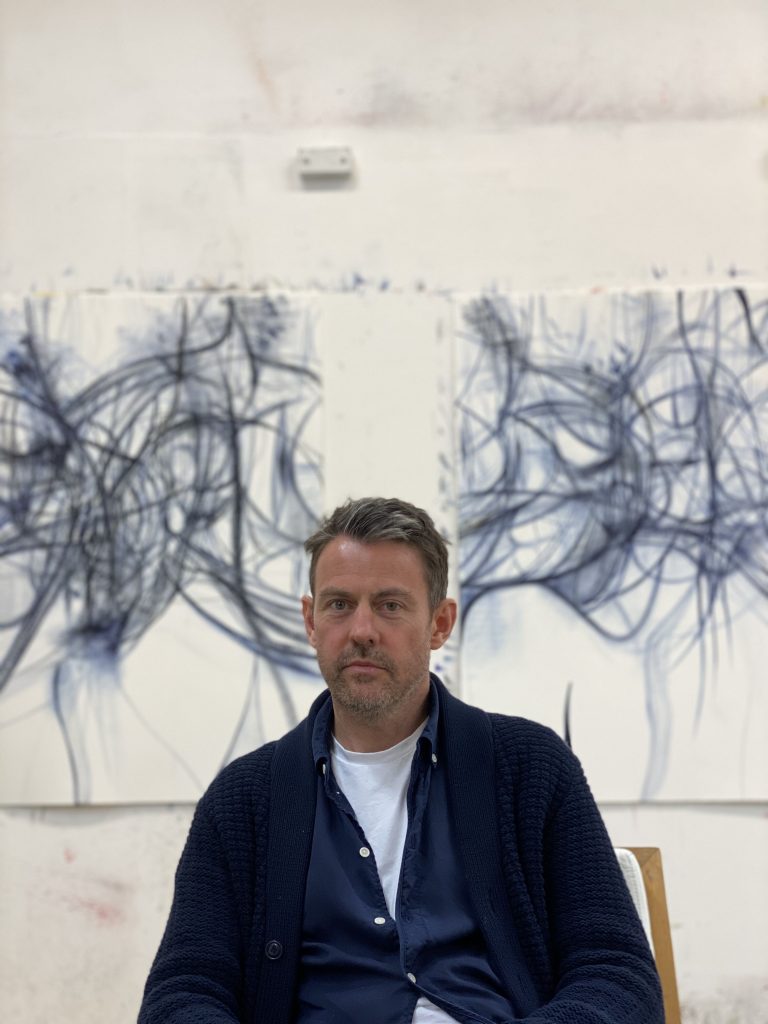
Nigel Cooke is a British painter who currently lives and works in Kent. His paintings depict carnivalesque figures set within harsh landscapes that are littered with urban decay. The paintings imply a strong sense of foreboding both through the depicted forms such as skulls and derelict buildings and also through his use of colour which often features bilious toxic greens. The paintings develop and change over a protracted period of time and are built up though many layers of oil paint. The paintings often balance different languages of paint within the same canvas. Vast areas of colour are combined with obsessively detailed figuration and in recent works Cooke has incorporated large sweeping gestural marks into his compositions.


Nigel Cooke is a British painter who currently lives and works in Kent. His paintings depict carnivalesque figures set within harsh landscapes that are littered with urban decay. The paintings imply a strong sense of foreboding both through the depicted forms such as skulls and derelict buildings and also through his use of colour which often features bilious toxic greens. The paintings develop and change over a protracted period of time and are built up though many layers of oil paint. The paintings often balance different languages of paint within the same canvas. Vast areas of colour are combined with obsessively detailed figuration and in recent works Cooke has incorporated large sweeping gestural marks into his compositions.
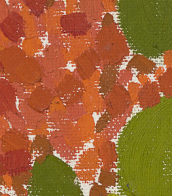

Edward William Cooke, a distinguished English artist, is celebrated for his mastery in maritime painting. His upbringing in an artistic family, with his father and uncle being notable engravers, significantly influenced his early development as an artist. Cooke's talent extended beyond the marine realm, as he was proficient in geological and botanical illustrations as well.
His works, which often depicted detailed ships and coastal scenes, were heavily inspired by 17th-century Dutch marine artists, a style that became synonymous with his name. Edward William Cooke's paintings, such as "Beaching a Pink at Scheveningen," exhibited at the Royal Academy, reflect his meticulous study of natural and light effects, particularly influenced by his travels across Europe, including the Netherlands, Scandinavia, and Venice.
Edward William Cooke's diverse interests led him to become a Fellow of several prestigious societies, including the Linnean Society, the Geological Society, and the Zoological Society. His contributions to the arts and sciences were further acknowledged when he was elected a Fellow of the Royal Society in 1863.
For art and antique enthusiasts, Edward William Cooke's legacy is a testament to his profound impact on maritime art, making his works valuable pieces in collections worldwide. If you're keen on exploring more about Cooke's art and contributions, consider signing up for updates on new product sales and auction events related to his works.


Nigel Cooke is a British painter who currently lives and works in Kent. His paintings depict carnivalesque figures set within harsh landscapes that are littered with urban decay. The paintings imply a strong sense of foreboding both through the depicted forms such as skulls and derelict buildings and also through his use of colour which often features bilious toxic greens. The paintings develop and change over a protracted period of time and are built up though many layers of oil paint. The paintings often balance different languages of paint within the same canvas. Vast areas of colour are combined with obsessively detailed figuration and in recent works Cooke has incorporated large sweeping gestural marks into his compositions.
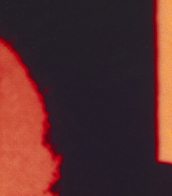

Nigel Cooke is a British painter who currently lives and works in Kent. His paintings depict carnivalesque figures set within harsh landscapes that are littered with urban decay. The paintings imply a strong sense of foreboding both through the depicted forms such as skulls and derelict buildings and also through his use of colour which often features bilious toxic greens. The paintings develop and change over a protracted period of time and are built up though many layers of oil paint. The paintings often balance different languages of paint within the same canvas. Vast areas of colour are combined with obsessively detailed figuration and in recent works Cooke has incorporated large sweeping gestural marks into his compositions.


Edward William Cooke, a distinguished English artist, is celebrated for his mastery in maritime painting. His upbringing in an artistic family, with his father and uncle being notable engravers, significantly influenced his early development as an artist. Cooke's talent extended beyond the marine realm, as he was proficient in geological and botanical illustrations as well.
His works, which often depicted detailed ships and coastal scenes, were heavily inspired by 17th-century Dutch marine artists, a style that became synonymous with his name. Edward William Cooke's paintings, such as "Beaching a Pink at Scheveningen," exhibited at the Royal Academy, reflect his meticulous study of natural and light effects, particularly influenced by his travels across Europe, including the Netherlands, Scandinavia, and Venice.
Edward William Cooke's diverse interests led him to become a Fellow of several prestigious societies, including the Linnean Society, the Geological Society, and the Zoological Society. His contributions to the arts and sciences were further acknowledged when he was elected a Fellow of the Royal Society in 1863.
For art and antique enthusiasts, Edward William Cooke's legacy is a testament to his profound impact on maritime art, making his works valuable pieces in collections worldwide. If you're keen on exploring more about Cooke's art and contributions, consider signing up for updates on new product sales and auction events related to his works.
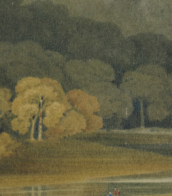

Edward William Cooke, a distinguished English artist, is celebrated for his mastery in maritime painting. His upbringing in an artistic family, with his father and uncle being notable engravers, significantly influenced his early development as an artist. Cooke's talent extended beyond the marine realm, as he was proficient in geological and botanical illustrations as well.
His works, which often depicted detailed ships and coastal scenes, were heavily inspired by 17th-century Dutch marine artists, a style that became synonymous with his name. Edward William Cooke's paintings, such as "Beaching a Pink at Scheveningen," exhibited at the Royal Academy, reflect his meticulous study of natural and light effects, particularly influenced by his travels across Europe, including the Netherlands, Scandinavia, and Venice.
Edward William Cooke's diverse interests led him to become a Fellow of several prestigious societies, including the Linnean Society, the Geological Society, and the Zoological Society. His contributions to the arts and sciences were further acknowledged when he was elected a Fellow of the Royal Society in 1863.
For art and antique enthusiasts, Edward William Cooke's legacy is a testament to his profound impact on maritime art, making his works valuable pieces in collections worldwide. If you're keen on exploring more about Cooke's art and contributions, consider signing up for updates on new product sales and auction events related to his works.


Edward William Cooke, a distinguished English artist, is celebrated for his mastery in maritime painting. His upbringing in an artistic family, with his father and uncle being notable engravers, significantly influenced his early development as an artist. Cooke's talent extended beyond the marine realm, as he was proficient in geological and botanical illustrations as well.
His works, which often depicted detailed ships and coastal scenes, were heavily inspired by 17th-century Dutch marine artists, a style that became synonymous with his name. Edward William Cooke's paintings, such as "Beaching a Pink at Scheveningen," exhibited at the Royal Academy, reflect his meticulous study of natural and light effects, particularly influenced by his travels across Europe, including the Netherlands, Scandinavia, and Venice.
Edward William Cooke's diverse interests led him to become a Fellow of several prestigious societies, including the Linnean Society, the Geological Society, and the Zoological Society. His contributions to the arts and sciences were further acknowledged when he was elected a Fellow of the Royal Society in 1863.
For art and antique enthusiasts, Edward William Cooke's legacy is a testament to his profound impact on maritime art, making his works valuable pieces in collections worldwide. If you're keen on exploring more about Cooke's art and contributions, consider signing up for updates on new product sales and auction events related to his works.


Nigel Cooke is a British painter who currently lives and works in Kent. His paintings depict carnivalesque figures set within harsh landscapes that are littered with urban decay. The paintings imply a strong sense of foreboding both through the depicted forms such as skulls and derelict buildings and also through his use of colour which often features bilious toxic greens. The paintings develop and change over a protracted period of time and are built up though many layers of oil paint. The paintings often balance different languages of paint within the same canvas. Vast areas of colour are combined with obsessively detailed figuration and in recent works Cooke has incorporated large sweeping gestural marks into his compositions.
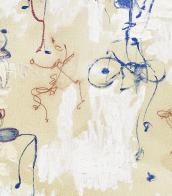

Nigel Cooke is a British painter who currently lives and works in Kent. His paintings depict carnivalesque figures set within harsh landscapes that are littered with urban decay. The paintings imply a strong sense of foreboding both through the depicted forms such as skulls and derelict buildings and also through his use of colour which often features bilious toxic greens. The paintings develop and change over a protracted period of time and are built up though many layers of oil paint. The paintings often balance different languages of paint within the same canvas. Vast areas of colour are combined with obsessively detailed figuration and in recent works Cooke has incorporated large sweeping gestural marks into his compositions.


Edward William Cooke, a distinguished English artist, is celebrated for his mastery in maritime painting. His upbringing in an artistic family, with his father and uncle being notable engravers, significantly influenced his early development as an artist. Cooke's talent extended beyond the marine realm, as he was proficient in geological and botanical illustrations as well.
His works, which often depicted detailed ships and coastal scenes, were heavily inspired by 17th-century Dutch marine artists, a style that became synonymous with his name. Edward William Cooke's paintings, such as "Beaching a Pink at Scheveningen," exhibited at the Royal Academy, reflect his meticulous study of natural and light effects, particularly influenced by his travels across Europe, including the Netherlands, Scandinavia, and Venice.
Edward William Cooke's diverse interests led him to become a Fellow of several prestigious societies, including the Linnean Society, the Geological Society, and the Zoological Society. His contributions to the arts and sciences were further acknowledged when he was elected a Fellow of the Royal Society in 1863.
For art and antique enthusiasts, Edward William Cooke's legacy is a testament to his profound impact on maritime art, making his works valuable pieces in collections worldwide. If you're keen on exploring more about Cooke's art and contributions, consider signing up for updates on new product sales and auction events related to his works.
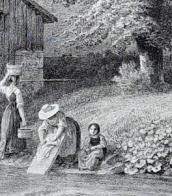
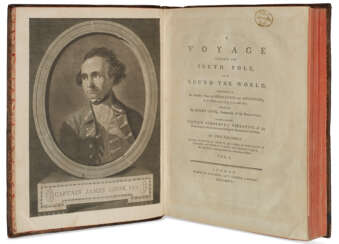




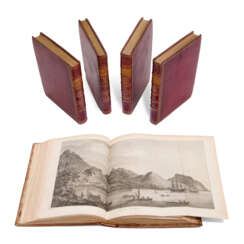


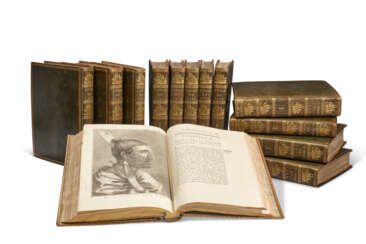


![Captain James Cook (1728-1779) – [John Marra]](/assets/image/picture_1385213/16ce2/6033d8a43089fb532b19e2d6c61836201618394400jpg__fix_374_244.jpeg)
![Captain James Cook (1728-1779) – [John Marra]](https://veryimportantlot.com/assets/image/picture_1385213/16ce2/6033d8a43089fb532b19e2d6c61836201618394400jpg__fix_374_244.jpeg)
